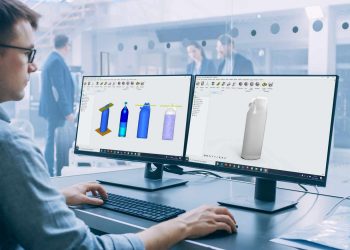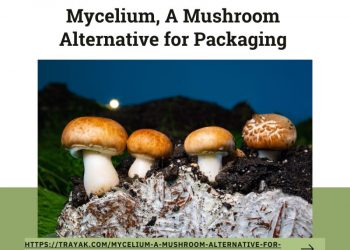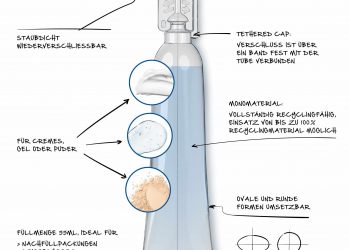Unfortunately, of the 6.3bn tonnes of plastic waste produced since the 1950s only 9% has been recycled and another 12% incinerated. The rest has been dumped in landfills or the natural environment.[1] Some researchers suggest that by 2050 there could be more plastic than fish in the oceans by weight. [2] Today, more than 91% of plastic waste ends up in landfills.
Extended Producer Responsibility or EPR is a legislative strategy used by most industrialised nations to promote chemical recycling of plastic waste. Globally, EPR is the only viable strategy to prevent landfilling of plastic waste.
EPR based Business Model to Achieve Circular Economy for Plastics:

(1) Usually, the Polymers (Plastics) are manufactured from crude oil as raw material. To support the circular economy for plastics, the polymer manufacturers shall start using ‘petrochemicals manufactured from plastic waste’ with crude oil for manufacturing new plastics. (2) Polymer products manufacturer convert plastic granules into plastic products like packaging material and all other plastic products. (3) This packaging and all other plastic products are consumed by the society generating post-consumer and post-industrial plastic waste. (4) This plastic waste is collected by the municipal corporations and various post plastic waste management organisations. Less than 5% of this plastic waste is physically recycled using processes like extrusion and re-granulation. Some of this plastic waste leaks into the environment, rivers and ocean before reaching the landfill site. (5) Globally, more than 95% of plastic waste reaches the landfill site resulting in humongous quantities of plastic pollution on a daily basis. The plastic waste in landfill site has reached the end of its life because it cannot be further recycled physically. At this stage, it is necessary to break this plastic waste into crude oil like petrochemicals. (6) Chemical recycling of end of life plastic waste involves processes like pyrolysis and distillation to convert plastic waste into petrochemicals. Due to the moisture and soil present in plastic waste, chemical recycling of landfill plastic waste generates byproducts like wastewater and soil. This wastewater needs to be recycled using wastewater treatment and soil can be reused for gardening. To support the cost of chemical recycling, there are two revenue streams: (a) EPR & (b) sale of the petrochemical products manufactured from plastic waste. In the case of chemical recycling, the revenue is lesser than the cost incurred resulting in the requirement of viability gap funding in the form of EPR charges.

Polymer waste is generated during manufacturing, distribution and sale of a variety of products including consumer goods, tires etc. EPR assigns the responsibility of disposal of this waste to the manufacturer of the goods. For example, disposal of post-consumer laminate waste (PCLW) or flexible packaging used for food items, consumer goods, and water bottles is assigned to consumer goods manufacturers. Similarly, the responsibility of disposal of Waste tires disposal responsibility is assigned to the tire manufacturing companies under EPR.
At the centre of EPR lies a closed-loop approach to managing products, whereby waste generated from a product is used to produce another product. This approach ensures the price of the product includes the cost of its safe disposal. Therefore, this approach significantly reduces the environmental impact of the waste as well as leads to lower cost of production for the new product.
Product manufacturers are best-placed to reduce the environmental impact of waste by ensuring they use input materials and packaging strategies that reduce waste generation. Since EPR has shifted the burden of waste disposal from governments to these product manufacturers, it has driven the adoption of innovative product and packaging strategies leading to a reduction in plastic waste.
In practice, if a manufacturer introduces 100MT of polymer packaging material in the market, then it is responsible for the collection and disposal of 100MT of post-consumer plastic waste. The company may also delegate this responsibility to a Producer Responsibility Organization (PRO). A PRO is paid by the manufacturer for collection and safe disposal of plastic waste.
Broadly, plastic waste can be classified into recyclable and non-recyclable waste:
• Recyclable plastic waste, as the name suggests, can be physically recycled using technologies such as remoulding. Examples of this type of plastic waste include segregated and more than 95% pure HDPE, PE, PP Plastic waste.
• End-of-life plastic waste cannot be physically recycled. Examples of this type of plastic waste include PCLW. This plastic waste can not be physically recycled by remoulding, and incineration of such plastic waste is banned in most developed countries. Hence chemical recycling of this plastic waste by pyrolysis or hydrolysis is the only way for disposal of this end-of-life plastic waste.

Key challenges in the chemical recycling of post-consumer plastic waste:
1. Consumers are not used to segregation of plastic waste at the source. This results in contamination of plastic waste by dirt and moisture. Discount termination of Dirt and moisture results into an additional cost of plastic washing and drying before producing diesel from Post-consumer plastic waste.
2. Process Plant of capacity more than 20 ton per day are viable in case of the chemical recycling of plastic waste. At smaller capacities of less than 5 ton per day, the cost of manufacturing diesel from plastic waste can be as high as 50 rupees per litre.
3. Plastic producers need to adopt a more proactive approach towards EPR. Most of the plastic producers are interested in taking initiatives to comply with EPR responsibilities only when the pollution control board asks them to do so.
References:
1. “The known unknowns of plastic pollution”. The Economist. 3 March 2018. Retrieved 17 June 2018.
2. Sutter, John D. (12 December 2016) “How to stop the sixth mass extinction”. CNN. Retrieved 18 September 2017.
3. Laura Parker “Here’s how much plastic trash is littering the earth” National Geographic, Published December 20, 2018.
Director of Agile Process Chemicals Limited
APChemi offers consultancy and solutions for fulfilling your EPR obligations. APChemi's operational plants chemically recycle more than 75,000kg/day of plastic waste on a daily basis.






